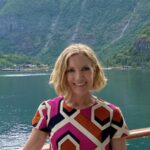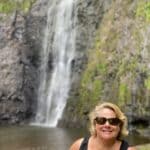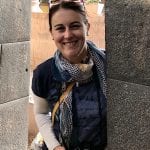On our first day in the
Galapagos with
Lindblad, there was a photography class given by a National Geographic photographer, who gave us general picture-taking tips. As the week went on, he held daily sessions offering one-on-one help with our personal cameras. I showed him some of my pictures, and he suggested I change a couple settings on my camera, and from then on, I felt more comfortable with my photography. On the last day, several of my pictures were chosen for our farewell slideshow, and I know without the professional photographer’s guidance my pictures would not have turned out nearly as well as they did.
Photography aside, although I am pleased with my 600+ pictures from the week, I concentrated on not losing the moment of the “once in a lifetime” experiences. I snorkeled from the Zodiacs with curious sea lions swimming under me, saw the Galapagos penguins, Nazca boobies, blue- and red-footed boobies, flamingos, waved albatross, finches, mockingbirds, and fur seals… to name a few. These native species don’t have fear of people, so we were able to get close. The standard distance we were to keep was six feet, but many of them were comfortable with a closer distance, especially the sea lions, which would swim or “walk” as close as they wanted.
I was surprised by how all islands were quite different – beaches, topography, vegetation, soil, volcanic rock, etc. Of course, this is what Darwin found 180+ years ago – wildlife adapting to their different environments. This was evident with the different birds but also the iguanas. Some islands had marine iguanas and some had land iguanas, and the land iguanas varied in color according to their island. The naturalists were as much in awe of the variety of species as I was. In addition to the naturalists onboard, there were scientists visiting from different colleges and intuitions from around the world – from Israel to California. These scientists studied everything from sand to mantra rays, and they were very approachable and eager to share their knowledge.
On the ship we had daily lectures on topics ranging from Darwin to oceanography. Additionally, we had daily debriefings during the cocktail hour prior to dinner. During the debriefings, there was a mentioning of what we had seen that day and what was in store for us the next day. I attended the lectures and debriefings almost every time. I suffered from FOMO (fear of missing out). The cocktail hour was also a chance to connect with fellow passengers and compare notes on what we saw and share our best pictures.
A week went very quickly. It’s impossible to say what my favorite part of my Lindblad National Geographic cruise was. The Galapagos Islands has been a long-time “bucket list” destination for me, and I was so excited to visit the islands. My excitement was matched, and, in a couple of cases, possibly surpassed by fellow travelers and the staff. We all felt the magic of the beauty and wildlife. It was a week of “pinch me, I can’t believe I am here.” From the creatures in the ocean to the birds and reptiles on the land, I was in a constant state of awe.
A few weeks after returning home and wondering if the whole trip had been a dream, Lindblad sent an email with pictures from the cruise. Reliving the week-long adventure put a smile on my face. I hope to return one day (adding it back to the bucket list, perhaps) because the Ecuadorians are such good stewards of the islands. As a result, I should find it much the same as this first trip. Contact me to help make your Galapagos trip a reality!
Read about Part 1 of Nanci’s Galapagos Trip here.



